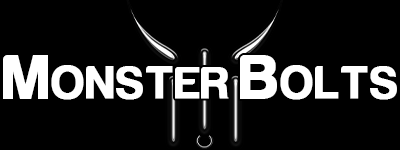Terminal Stud Size & Wire Gauge Chart (AWG ↔ Stud)
Use this quick reference to match ring terminal stud sizes (e.g., #6, #8, #10, 1/4") with AWG wire ranges and see inch/mm diameters for each stud. A printable, to-scale PDF is included below.

This chart helps you select the correct ring terminal (or fork terminal) stud size for your hardware and pair it with the proper AWG crimp range. It’s especially handy when working with sealed electrical connectors like Krimpa-Seal and OptiSeal.
Stud Size, Diameter & Typical AWG Ranges
| Stud Size | Major Ø (inch) | Major Ø (mm) | Typical Ring Terminal AWG Range* | Notes |
|---|---|---|---|---|
| #4 | 0.112 | 2.84 | 22–16 AWG (red), 16–14 AWG (blue) | Small control circuits, electronics |
| #6 | 0.138 | 3.51 | 22–16 (red), 16–14 (blue), 12–10 (yellow) | Common equipment screws |
| #8 | 0.164 | 4.17 | 22–16, 16–14, 12–10 | Panels, grounds, marine |
| #10 | 0.190 | 4.83 | 22–16, 16–14, 12–10 | Automotive, machinery, junctions |
| 1/4" | 0.250 | 6.35 | 16–14, 12–10, 8 AWG, 6 AWG | Higher current connections |
| 5/16" | 0.313 | 7.94 | 12–10, 8 AWG, 6 AWG, 4 AWG | Battery lugs, starters, grounds |
| 3/8" | 0.375 | 9.53 | 8 AWG, 6 AWG, 4 AWG, 2 AWG | High-current, marine/auto |
| 1/2" | 0.500 | 12.70 | 4 AWG, 2 AWG, 1/0–4/0 (with proper lugs) | Heavy lugs, power distribution |
*Typical ranges shown for convenience. Always confirm terminal spec sheet for exact stud size compatibility and crimp range.
Selection Tips
- Match three things: stud size, wire AWG, and insulation/terminal type (ring vs. fork, heat-shrink vs. vinyl, tinned copper vs. brass).
- Environment matters: choose heat-shrink, tinned copper, or marine-grade where moisture/salt is present.
- Crimp correctly: use the right die for the color/size; pull-test after crimping.
- Printable US/Metric Ruler
- Measuring Fasteners: Length & Diameter
- Metric Thread Pitch Table • US Threads Per Inch (TPI)
- Contact Monster Bolts — fast shipping from Milton, Florida.
FAQ: Terminals, Stud Sizes & AWG
Do ring terminals list both stud size and wire gauge?
Yes. You’ll typically see the stud size (e.g., #10, 1/4") and the wire range (e.g., 16–14 AWG). Both must match your hardware and wire.
What color insulation should I pick?
Standard colors map to wire gauge: Red (22–16 AWG), Blue (16–14 AWG), Yellow (12–10 AWG). For larger wires (8 AWG and up), use appropriately sized non-color-coded lugs/terminals.
Can I use a #10 ring on a 1/4" stud?
No. #10 (0.190"/4.83 mm) will not fit a 1/4" (0.250"/6.35 mm) stud. Choose the exact stud size specified by your hardware.
When should I use heat-shrink terminals?
Anytime moisture, salt, vibration, or corrosion is a concern (marine/automotive). Heat-shrink provides strain relief and a sealed connection. Browse our full line of heat-shrink electrical connectors to find the right solution for your project.
